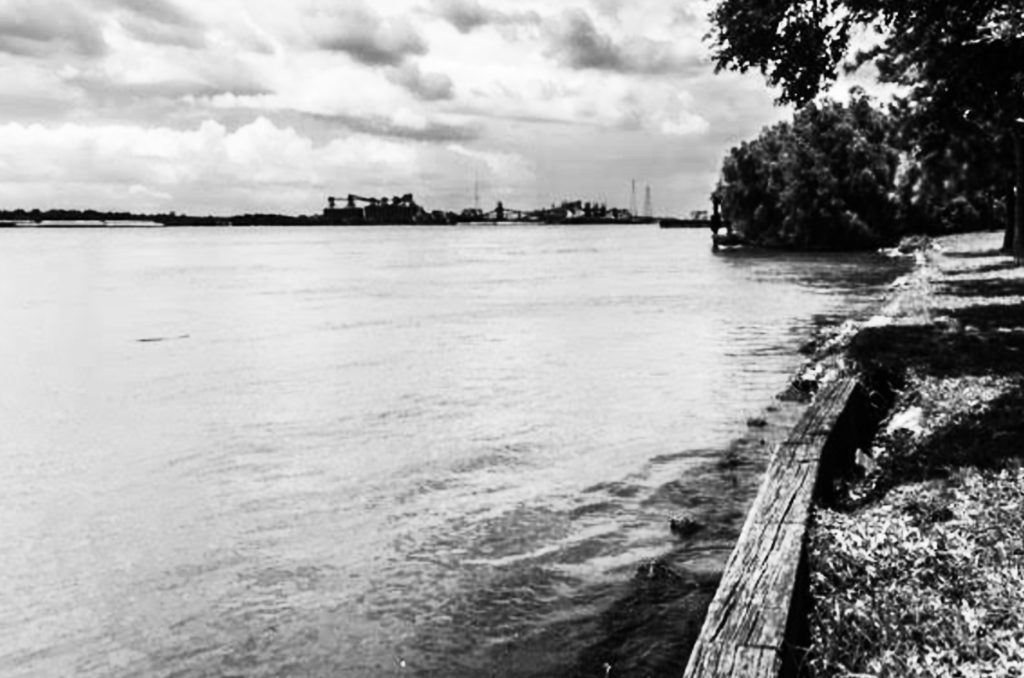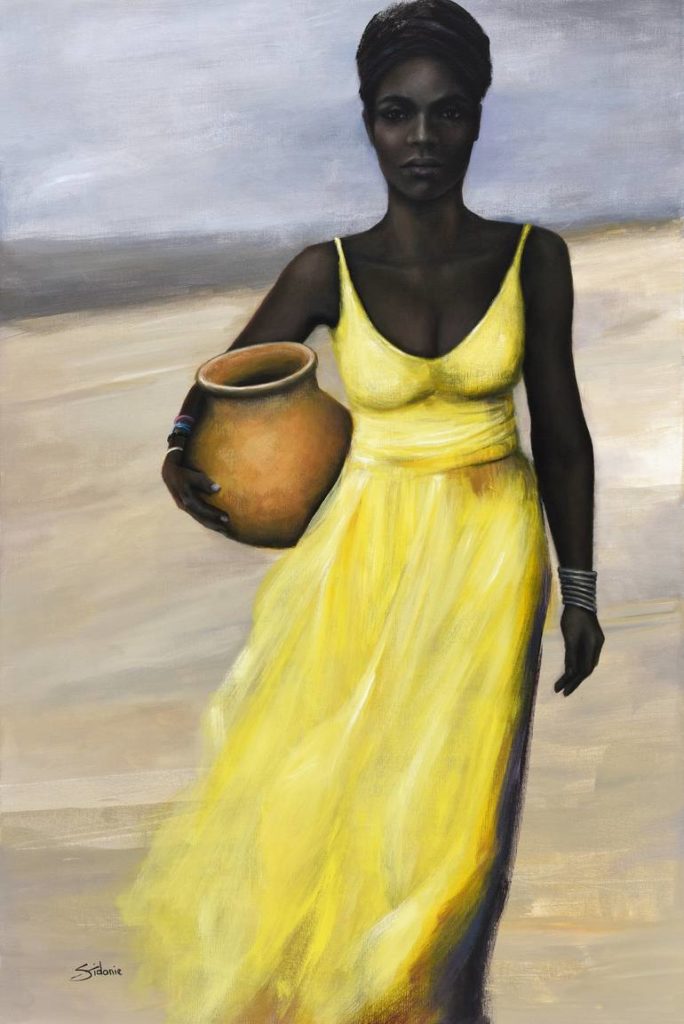Publisher’s Note: We are pleased to introduce Lydia Y. Nichols as a contributing writer who answered our call for freelance reporters willing to augment our coverage of not-yet-Hurricane Barry. In her cover letter, Lydia wrote, “I was a child at the time of Hurricane Katrina and though I evacuated, as with many of us, this season gives me anxiety. Fourteen years later, I am a single mother, young and black like many whose images were covered by the media in the weeks following 8/29/05 to shape (or justify) the Federal Flood narrative, living in a neighborhood from which thousands were displaced and replaced by whiter, wealthier, more educated counterparts.” We didn’t hesitate. Now, the floor belongs to Lydia Y. Nichols of New Orleans, Louisiana:
There’s something about the way we live in New Orleans. Tucked between storm surge and river levees. A bay we call a Lake, a Mighty River, and an artificial waterway we built between the two to facilitate industrial expansion. Under bridges and ‘cross canals where we dance through the streets, paint murals of us dancing through the streets, have panels about us dancing through the streets. At overpriced galas, luncheons, exhibition openings where we schmooze and shimmy. Held together by a relatively unchanging calendar of festivals and Carnival.
There’s something about the way we live in New Orleans, considering the time and place, that’s oddly comfortable most of the year. Until the floods come and sweep us into reality: The glaciers are melting, the heartland is flooding, temperatures are rising, and it all comes down to us, to here.
On Wednesday morning, I was awakened by my giggly toddler. Excited at the prospect of experiencing an alternative weather phenomenon to debilitating heat and being able to name it, he yelled: “Rain! Rain!” Outside our living room window, the water already covered one of North Claiborne’s two lanes and the rain was not letting up. Sure enough, by 8 am, the sidewalk and both lanes were covered, and water had seeped into the bottom story of my apartment building.
Wednesday’s flood was the third in less than two years. The flooding on Aug. 5th, 2017 forced the public to pay attention to the Sewerage and Water Board’s drainage system’s inability to accommodate levels of rainfall that we in New Orleans would call average, and with not many changes having been made to infrastructure nearly two years later, this year’s Mother’s Day flood overwhelmed a still unprepared drainage system (can’t exactly call it a failure when we knew it was going to fail).
What happened on Wednesday, though, adding inches to an already record-high Mississippi River, arriving three days before the landfall of a potential hurricane, overwhelming neighborhoods on higher ground like the Irish Channel and the University area that are known to drain quickly. What happened on Wednesday was different.
Barry, the tropical storm gaining strength as it snakes through the Gulf, is expected to touch down on Saturday, with a storm surge that will impede the River’s ability to flow into the Gulf, and between rainfall and storm surge, the Army Corps of Engineers estimated on Wednesday, Barry will bring the River’s height to 20 feet which — that would’ve been above the levee in some areas like Algiers, behind the Army Corps’ Riverbend offices, and in parts of St. Bernard Parish.
The Army Corps later contested the breach threat, stating that the levee measurements were based on gauges using a 1929 datum measurement scale while the 1988 datum measurement scale it uses internally (but for some reason, not on the gauges) is more accurate.
Matt McBride, the founder of the website Fix the Pumps who emerged as a leading “watchdog” of government engineers in the aftermath of Hurricane Katrina, was livid about the Corps’ admission, pointing to a 288-page 2009 report by the Interagency Performance Evaluation Task Force (IPET). “Literally, Finding #1 in the Corps’ own wide-ranging ‘IPET’ investigation of their own failures which caused the levee failures after Katrina passed New Orleans was that the Corps’ use of different bases, or ‘datums,’ for measuring heights was a serious contributor to the failures,” McBride wrote on Facebook. “Doing so allowed shorter structures to be built without anyone realizing it until it was too late. Some levees or floodwalls ended up multiple feet shorter than intended. Here we are 14 years later, and we find out they’ve been doing nearly the same damn thing the whole time with the river levees, and the only way the public – and presumably a whole pack of elected officials and decisionmakers – found out was that the levees are threatened with surge.”
On Thursday, the Army Corps said that they anticipate that the water will only rise to 19 feet, instead of their original estimate of 20 feet, a seemingly convenient recalculation.

See, when it comes to bodies of water, the Gulf is usually our primary nemesis – that body of saltwater at the foot of Louisiana that strengthens storms with its increasingly-warm waters, feeding Georges, Katrinas, Ritas, Isaacs. The River and the threat it poses in response to our poor decision-making has been relatively diminished in stature. After collecting agricultural and industrial waste from ten states and numerous tributaries (41% of the nation’s riverine drainage) for decades, it is gathering at our feet and shouting for our attention.
Here we are, New Orleans, at the intersection of coastal erosion, sinking due to manmade infrastructure, underprepared drainage system, a storm that may back up the Mississippi River, and a weak levee system. Barry may not be the nail in our coffin, but it’s only a matter of time. And what are we to do about it?
We talk about the things that make New Orleans special – the food, the music, the joie de vivre.
But one of the under-appreciated uniquenesses of New Orleans is that the city’s people are among those most vulnerable to the impacts of climate change and the crude oil, natural gas, and petrochemical industries on which the city’s people depend by design are most culpable for climate change. And that’s before we even scratch the surface of the environmental injustices that have relegated Black and indigenous peoples, immigrants, and the working-poor to the most vulnerable areas of the most vulnerable region – on the lowest land, adjacent to poisonous plants, in neighborhoods with the least infrastructural support.
This characteristic, as those most vulnerable and those most able to do something about it, presents an opportunity.

In Ifa, one of several West African religions that influenced spiritual practices of the New World such as Voodoo, Oshun the goddess of rivers, carries bottomless bags of red thread, which she uses to connect all that is.
The River is a force of attraction.
She keeps the planets in proper orbit, she keeps our relationships in order with sweetness and the occasional act of retribution. We go to her to ask for assistance in attracting money, love, professional success. The River, like Oshun, orchestrates chaos, carefully winding into and out of attraction with what we want and that for which we no longer have use.
The alternative to the careful winding, to this orchestration of chaos, is the quick-fix – to force the attraction, to contain the attraction, ball it up – resulting in a tangled web that takes many times as long to undo as it would have to do it the deliberate way at the first opportunity.
The relationship of New Orleans’ built environment to the natural environment is a tangled web, and we have to contend with that – teasing the ends of thread out of centuries-old, matted knots patiently, deliberately, and with care. We want better infrastructure, sure, but what does better mean? Better as in more permanent, long-lasting, the standards partially responsible for this predicament in the first place? Are we going to double down on values of dominance (of land and of people) at the expense of the River’s ecology and by extension our own safety?
Beyond infrastructure and the responsibilities of our elected officials and the people they place in positions of power to make decisions that protect us, as a community, what does it look like to carefully wind ourselves out of those dependencies that we know have a cumulative impact on our ecology which, in turn, in real time, right now, threaten our lives and those of our neighbors?
Something about the way we’re living in New Orleans isn’t working, and the River has sent us a message: Something’s got to give.
